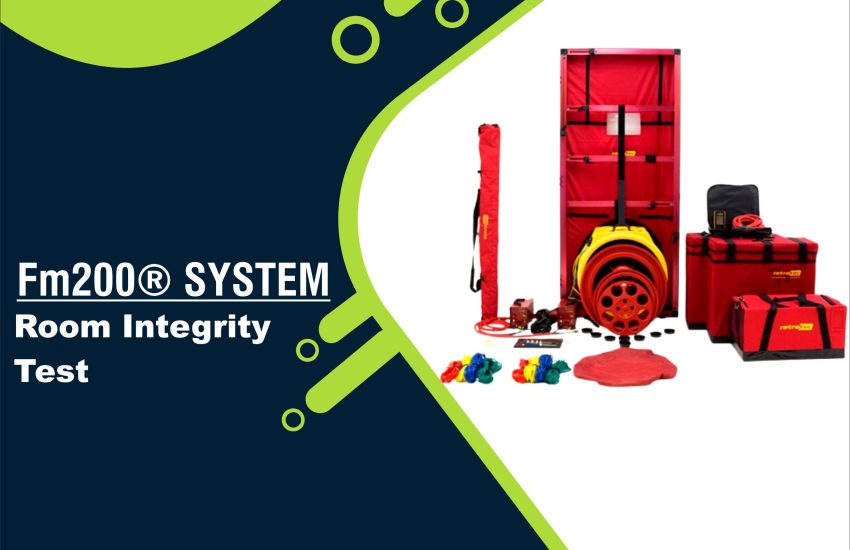Room Integrity Test, also known as an enclosure integrity test or door fan test, is a critical procedure used to determine how well a room can contain a clean agent or gas-based fire suppression system during discharge. The test assesses air leakage rates, ensuring the room can hold the extinguishing agent for a minimum retention time as per standards like NFPA 2001 and ISO 14520.
Why Room Integrity Testing Is Important
For fire suppression systems, especially clean agent systems like FM-200, NOVEC 1230, or CO2, maintaining the concentration of the agent for at least 10 minutes is vital to extinguish a fire completely and prevent re-ignition. A properly sealed room ensures:
- Effective fire suppression
- Compliance with international fire safety standards
- No unnecessary system discharges
- Reduced maintenance and operational costs
- Safety for sensitive equipment and personnel
When to Perform a Room Integrity Test
You should conduct a room integrity test:
- During initial installation of the fire suppression system
- After any changes to room structure (walls, doors, windows)
- After HVAC modifications or cable penetrations
- As part of routine annual maintenance
- Before system re-commissioning
How Is a Room Integrity Test Performed?
1. Preparation
- Seal the room as it would be during actual fire suppression activation.
- Close all doors, windows, and penetrations.
2. Door Fan Test
A calibrated fan system is installed in the doorway to pressurize and depressurize the room. This step measures the airflow required to maintain a specific pressure.
3. Leakage Measurement
The test identifies air leakage paths, calculates leakage area, and determines if the retention time for the suppression agent will meet required standards.
4. Retention Time Analysis
Software tools simulate the behavior of the fire suppression agent based on leakage rates and room volume, ensuring the agent will remain effective for at least 10 minutes.
Standards for Room Integrity Testing
Room integrity tests are governed by several international standards, including:
- NFPA 2001 – Standard on Clean Agent Fire Extinguishing Systems
- ISO 14520 – Gaseous fire-extinguishing systems — Physical properties and system design
- BS EN 15004 – European standard for gaseous fire-extinguishing systems
Applications of Room Integrity Testing
Room integrity testing is essential in environments where clean agent systems are used:
- Data centers and server rooms
- Electrical switchgear rooms
- Control rooms
- Archives and libraries
- Telecommunications rooms
- Medical and pharmaceutical labs
Common Keywords and Phrases
For better online visibility, here are frequently used and search-optimized keyword phrases:
- room integrity test for data center
- fire suppression system room test
- server room enclosure integrity test
- door fan integrity testing
- clean agent gas containment test
- room leakage detection for FM-200
- NFPA 2001 integrity compliance
- airtight room test for fire protection
- room pressure testing service
- retention time calculation for suppression system
Choosing a Room Integrity Testing Service
When hiring a provider for room integrity testing, ensure they offer:
- Certified and trained technicians
- Compliance with NFPA, ISO, and local codes
- Detailed reporting with diagrams and calculations
- Recommendations for sealing improvements
- Quick turnaround for test results
Conclusion
A room integrity test is a non-negotiable part of maintaining a reliable, safe, and compliant fire suppression system. Whether protecting a mission-critical data center or a high-security archive, this test ensures that your clean agent system performs when it matters most.


